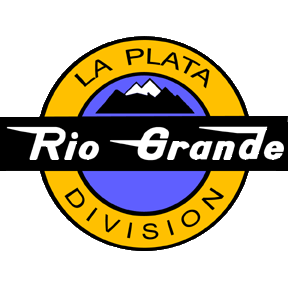

of the
|
My model railroad is based on the Moffat Road's line between Denver
and Winter Park, during the last decades of Rio Grande (and Southern Pacific)
ownership.
I also am now expanding into contemporary times, adding Union Pacific
equipment for post-1996 operations.
The
idea is to capture the feel of the ascent from Denver to
the continental divide. For the real railroad, ascending some 4,000 feet
of elevation in about sixty miles is a real operational challenge. In my
case, the distances are much smaller but the challenges are similar. For
one thing, I don't have automatic air brakes on my cars!
With the current version of the layout, I implemented a major change in design
philosophy. Instead of a continuous loop, the layout is of a point-to-point
design with a reverse loop at one end. The mainline is single track with
sidings, just like the real thing.
The layout occupies about half of my garage with a footprint roughly 18' X 12'.
In HO scale, it's difficult to fit much railroad into a space this size, so I
decided to double-deck much of the layout. Since I don't have a
warehouse to build it in, I chose to concentrate on a few selected scenes.
Each is separated from the rest by some sort of view block, and arranged
sequentially. Some of the scenes are fairly large-- Denver North
Yard and the Big Ten loops, for instance-- whereas others are more compact.
Also, given the dimensional restrictions and the scale, a considerable degree of
compression is required to fit everything in. My compression ratio is
roughly 4:1. I didn't compromise on the ruling grade, which is 2% in
places, so some of the tight curves are a bit of a problem with longer, heavier
trains. On the other hand, this makes powered helpers something more than
a cosmetic feature-- I actually need the extra power pushing back there! On the subject of compression: I have taken quite a bit of "modeler's license" with certain aspects of the scenes. Notably, I have moved tunnel 27 about a half mile up the canyon so it's much closer to tunnel 29, and moved tunnel 30 about 4 miles east so that it's right next to the bridge at milepost 36.45. On the layout, it makes sense to do it that way. Click Here to see the basic track plan. Starting at the lower end, the route begins at North Yard in Denver. The south end of the yard was conceived as leading to a reversing loop for turning trains, representing the Joint Line connection. (Management is reconsidering this idea, however. The COO is recommending to the Board that, instead of a loop, a new linear extension be built to include a Union Station / Joint Line module. Among other things, this would give the passenger trains somewhere to go.) North Yard itself contains engine servicing tracks, bowl tracks, a piggyback track, and the Cargill elevator. The north end of the yard (RR west) leads to the westbound main line and Rocky siding.
I've been a fan of this stretch of track all my life, so I hate to pin the layout down to a single time period. Accordingly, I have equipment which dates from the early Sixties all the way through modern day. However, I also detest anachronism, so I have developed lists for various eras, with valid rolling stock for that period. My main operating eras currently are 1981, 1988, 1994, and 2003. |
© 1998 - 2006, James R. Griffin. All rights reserved.